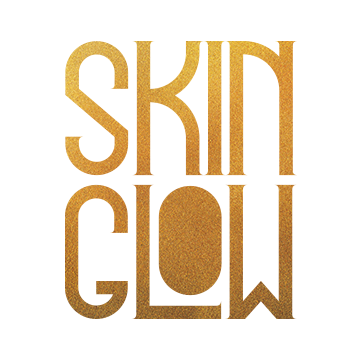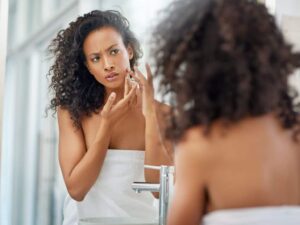Fungal acne a.k.a yeast folliculitis is a common skin condition caused by a yeast type called Malassezia, which is naturally found on your skin. The condition is also called Pityrosporum folliculitis, and it was named after the doctor who discovered it.
The article below will cover the most asked questions about this type of folliculitis and will explain how to differentiate fungal acne from acne vulgaris.
What is fungal acne or yeast folliculitis?
Fungal acne is caused by yeast, a type of fungus that naturally lives on your skin. The problems appear when the body cannot balance this fungus, and an overgrown yeast occurs. Such overgrowth will affect the hair follicles, causing an infection that looks similar to acne.
Sometimes it might appear on people who had regular acne and they misdiagnose it and treat it improperly. It is a very itchy condition that many people have to deal with.
Which ingredients cause fungal acne?
Sometimes, carbohydrates can be the cause of your fungal acne because this yeast is using them as food. Sweets and other foods that we adore contain many of these carbohydrates, so if you want to slow down this fungus, we recommend you avoid these types of foods. However, these are not the only factors that can cause fungal acne.
When you go to the gym for your daily workouts, you might end up with this superficial folliculitis, because sometimes you wear your sweaty clothes for too long.
Wearing the same gym clothes without washing them may also give you unwanted fungal acne because this practice allows yeast to develop on the material.
Tight clothes or synthetic clothes that do not allow your skin to properly breathe will cause extra sweat. They will create a hospitable place for yeast to grow uncontrollably and disturb the bacteria – yeast balance.
The same problem occurs to people who live in warm environments. They will abundantly sweat, therefore providing the perfect place for fungal acne to rise.
Antibiotics can help you solve an issue, but when we are talking about your skin, they will create an unstable environment, and the fungi will thrive. To make sure this will not happen, you need a healthy diet.
Also, people with a suppressed immune system might fight a fungal acne battle because this problem will make your skin condition reappear soon after you thought you treated it.
What fungal acne looks like?
Fungal acne usually appears on the upper back, chest, or shoulders or areas where your skin produces sebum. It comes with small bumps focused on hair follicles. This type of acne produces small spots, also called pustules, that are red and quite itchy.
You might easily confuse it with acne vulgaris, but treatments for these two are different. We highly recommend you see a skin care specialist or a dermatologist that will help diagnose this skin condition.
Our specialists are always happy to help and will recommend the best treatment for your skin, whether it is a topical cream, shampoo, or procedure.

Is fungal acne contagious?
Unfortunately, fungal acne can be contagious in closed spaces. That happens because the yeast tends to spread.
You should keep that breakout away from other people and other parts of your body. Avoid swapping clothes with your best friends and avoid contact in that region.
Does fungal acne leave scars?
Even if fungal acne consists of small red pimples, you should never pop them because this bad habit will lead to scarring. Also, when you do that, there will be times when your hands are not clean and will only do worse.
Touching the area where you have this skin condition followed by touching another part of your body might lead to yeast expansion, and you certainly do not want to do that.
Popping these bumps will only lead to scarring and not solving the problem.
Will fungal acne come back?
Unfortunately, fungal acne might come back even if it was previously treated at home or by a specialist. To make sure you reduce these chances, you need to change a few bad habits.
First of all, wear clothes that allow your skin to properly breathe. Change and wash your clothes after you work out or sweat abundantly, reduce sugary foods and carbs, and use an antifungal soap. This way, you might prevent this type of folliculitis from reappearing.
Fungal acne, do I have it?
We advise not to diagnose and treat this condition on your own. It comes with symptoms that are common with acne and dermatitis, so you better see a specialist before taking any OTC medication or treatment. A specialist will test your skin for yeast and will give you the proper diagnose and cure.
However, fungal acne comes with small red bumps with whiteheads, and they cause a major itch. Unfortunately, you might develop Pityrosporum folliculitis when wearing a face mask for a long period.
Because you breathe hot air, you are creating the perfect environment for fungal acne under your mask. But that does not mean you should stop wearing it during these awful times. Proper hygiene, frequently changing your mask can help you prevent acne.

Fungal acne vs. regular acne
Even if they might look the same, fungal and regular acne are two different things.
Acne comes with whiteheads, blackheads, deep cysts, which makes the affected areas inflamed and painful. On the other hand, fungal acne is different because it consists of red pimples with or without heads and gives you a burning, itchy sensation.
Acne can be developed anywhere on your body, most frequently on your face and neck, while fungal folliculitis usually appears on the upper back, chest, and upper arms.
The treatment is very different for these two skin disorders: for acne, you will need microneedling, LED therapy, chemical peels, lasers, or a bespoke treatment to include combined procedure while Pityrosporum folliculitis can be treated with antifungal shampoos, prescribed medicine, topical creams, or special soap.
However, studies show that one person can have both fungal acne and acne vulgaris in the same time.
Do’s and Don’ts
If you want to prevent this skin conditions, there are some things you can do:
Do’s
- Better hygiene before and after the gym or all sorts of workouts that make you sweat abundantly;
- Once a week, use soap with antifungal properties;
- From time to time, switch your regular shampoo with an antifungal one (anti-dandruff shampoo);
- Shower more often during summer;
- Use a salicylic acid cleanser (will remove excess oil and dirt). This way, you will not be developing a proper environment for this condition.
If you include these do’s in your day-to-day routine, but you still do not see any improvement, you will need to see a specialist.
Don’ts
- No tight clothes;
- Wear no synthetic clothes;
- Do not wear gym clothes without washing them between your sessions;
- Benzoyl peroxide should be avoided and so does lauric acid contained in coconut oil.
Conclusions
Because it is easy to confuse fungal folliculitis with acne vulgaris, this condition shouldn’t be diagnosticated at home. If you spot red, itchy small bumps on your neck, back and chest, we recommend to see a specialist. Our friendly staff is always happy to help. Read more about acne treatments or contact us for more details.





